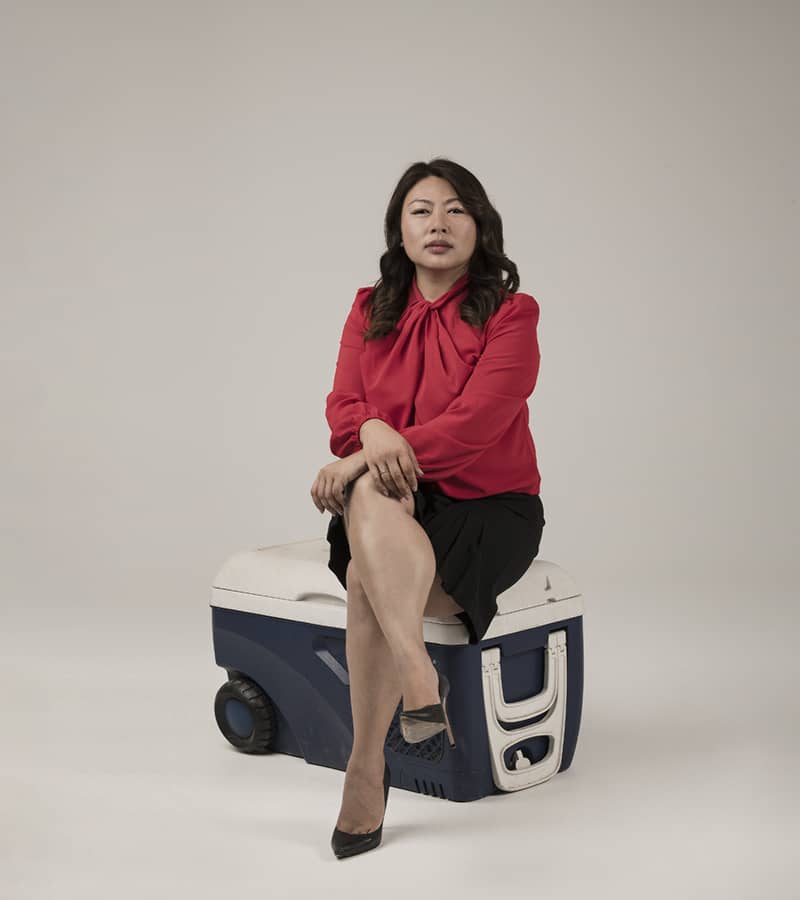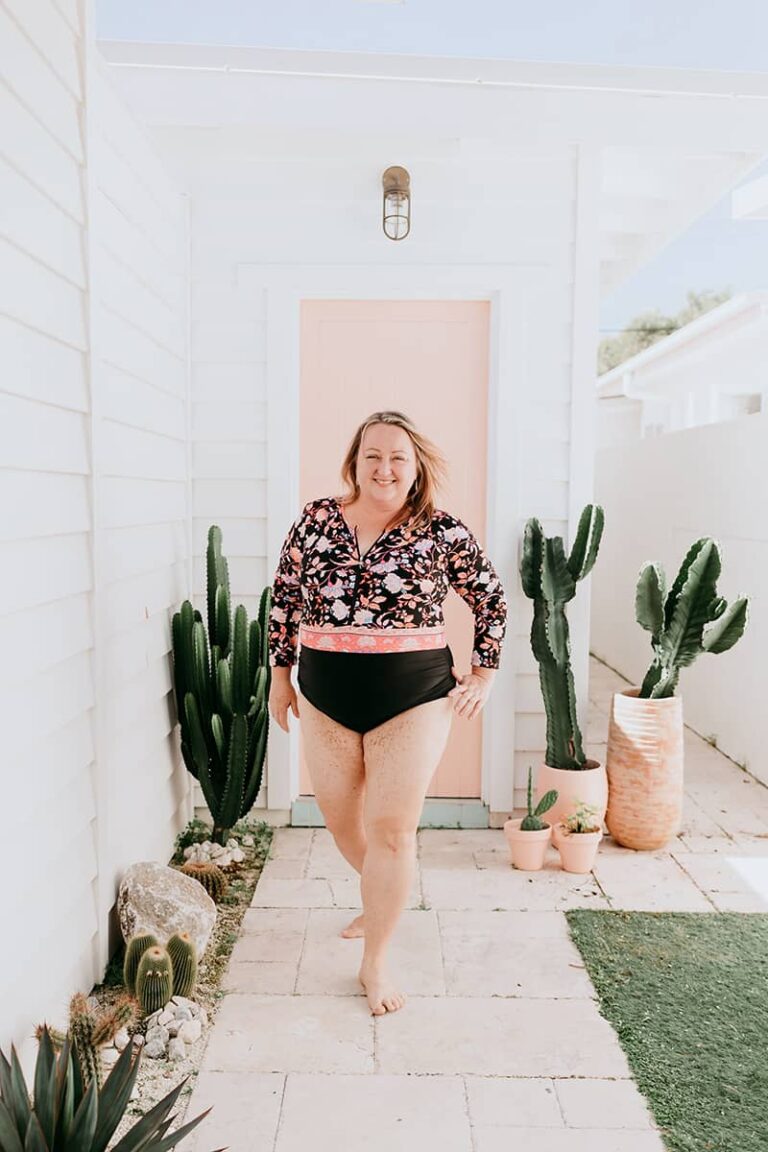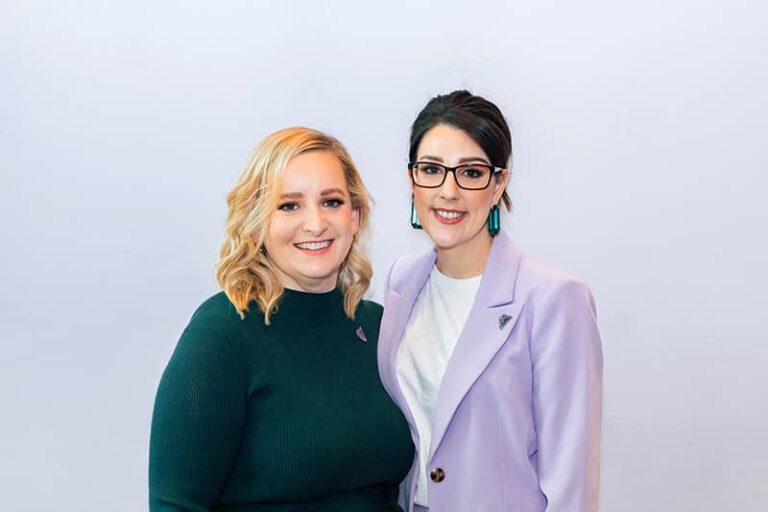I was born in the Philippines. My dad and his family moved to Australia in the late ’80s. Me and my mum, Tess, followed in 1995, when I was eight years old.
We lived with my dad in a granny flat behind my uncle’s family home. Not long after, my dad became physically and verbally abusive towards my mum and in one instance, he inappropriately touched me.
Despite my initial shock, I was quick to tell my mum. As she grappled with the unexpected and disappointing reality of our new life, it took her a few days before she took steps to protect me and went to the police and ask for help. Unfortunately, we weren’t given any, mostly because there was a language barrier – they didn’t understand what my mum was trying to say in her difficult accent. By this time, we had been in Australia for six weeks. With no one else to turn to, Mum decided to go to Centrelink and ask for assistance. They provided a translator, and that very same day they helped us get into a safe house.
The only possessions we had were the clothes we were wearing and a few items we had proactively put into our backpack.
I liked living in the shelter. There were other children my age to play with and the live-in carers made me feel safe. The room had two bunk beds and they helped us find clothes from the Salvation Army. They even provided us with lawyers who assisted us with an intervention order against my dad.
Six weeks later they found us long-term accommodation in public housing. The two-bedroom apartment had no furniture until St Vincent de Paul helped us with a couch, a dining table, pots and pans, chairs, and a futon bed. For a while we had no TV or a fridge, so my mum used an esky. I remember how the futon bed had stains on it, so we slept on the floor until we could afford a new mattress. Also, because we had no TV to watch the news, during daylight savings I ended up going to school an hour earlier. Life was challenging in those early days, which included living in fear of my dad or his family tracking us down.
For the first few months, I was depressed and I suffered from nightmares. A social worker who checked up on us on a weekly basis consequently helped us see a GP. At 10, I was diagnosed with PTSD, alongside my mum. The GP offered my mum anti-depressants which she refused to take, but there was nothing offered to me or any professional counselling for either of us.
Six months later, my older brother who was living with friends moved in with us and we shared a bedroom. Through him my dad found out where we were living, and he came to our door a few times. Luckily, he left us alone, because we were able to enforce the prevention order against him.
Finance-wise, we were always struggling. Although mum has a university degree in economics and in the Philippines she worked in her family’s business, her education wasn’t recognised in Australia and that made it hard for her to find a job. Somehow, we lived off her Centrelink pension, which was just over $400 a fortnight. Home life was never easy, as I had the ongoing responsibility of helping my mum with things like her Centrelink forms and my brother’s own struggles compounded my own, which gradually started to become a huge burden for my mental and psychological health.
Finding a way out
During Year 9, I began self-harming at home and at school, I felt that I didn’t fit in, so I decided to ask the school’s welfare coordinator for help. He called CASA House (a support centre against sexual assault) and it just happened that the social worker I began seeing every fortnight was Micaela Cronin, the current Domestic, Family and Sexual Violence Commissioner. She was the first person to help me acknowledge that it wasn’t my responsibility to parent the parent or look after my family – but the other way around. From those sessions I began to question my purpose in life and wonder if there was something better out there for me.
Then, on New Year’s Day, in 2000, after a fight with my mum and unable to deal with home life anymore, at age 15, I packed my school uniform, two dresses, a jumper, my rosary beads and prayer book, and with $15 in cash I left the house for good. I ended up going to the local police station and asked them if they could help me find a place to stay.
After a few phone calls a police officer drove me to a youth refuge. Although you had to be over 18 to stay there, the social worker allowed me to stay.
That first night I was scared and I leaned on my faith for support. I spent the night praying, asking God to give me strength and a sign, so I could feel safe.
Throughout this time, I went to my mum’s house, and I left a note saying: “I want you to know that I love you and I’m somewhere safe. I’m not coming back home, but I’ll be in touch.”
After a few weeks at the refuge, the social worker informed me that they had found permanent residence for me at the Lighthouse Foundation – a charity that provides homeless young people with a home and therapeutic care – and asked if I wanted to see the place first. Having no other option, I agreed to go.
The night before, I’d seen in a dream a big white house with a bell tower on top. To my amazement, the Lighthouse home in Toorak was the exact white house. For me that was a sign that I would be safe from now on in my life. And that proved to be true.
I shared my new home with six other kids and two in-house carers who were all very welcoming and I also started seeing a psychologist which they provided. Importantly, they helped me have therapy with my mum and that significantly improved our relationship.
Overall, my whole life changed for the better while under the care of the Lighthouse Foundation and the direct support of its founder and director who also lived with us, Susan Barton.
I felt safe, loved and cared for and they also helped me find my first part-time job. For two years after school, I would go to work, come home, do my homework and repeat the same routine. This kept me out of trouble, and it also helped me develop new skills and self-esteem.
I lived at the home from age 15 to 19, during which time over a six-month period when the house was being renovated, I stayed with the Stevens family – they were Lighthouse Foundation foster carers – for six months. They enhanced my life because for the first time, I got to see what it was like to have a normal family and it gave me hope that I could have one, too.
Becoming independent
Three months before completing my VCE [final] exams, I quit school. I didn’t know what I wanted to study at university, and I felt that entering the workforce and gaining my independence was much more important than completing exams.
Although Susan wasn’t happy with my decision, she helped me get my first full-time role as a junior at the accounts department in a hospital, age 17.
During that time the Stevens family asked me if I wanted to live with them on a full-time basis but I declined, as I realised it was time for me to venture into the world on my own. Concurrently, my best friend from the Lighthouse home went backpacking in the UK, so to stay busy and not feel sad, I got two more jobs working functions at night-time and in a café on the weekends. I was earning good money and through one of the café customers, I found a share house and eventually moved out on my own.
Two years later, age 20, I met my now ex-husband and within a year we were married. A month later I was pregnant with my son, now 16, and three years later I had my daughter, now aged 13. We divorced when I turned 30.
Throughout the years whenever I’ve needed parenting advice, I’ve called Susan. I’ve relied on her wisdom because I didn’t have anyone to parent me; I’ve always had to parent myself and make important decisions.
On a personal level, after a diverse career within healthcare, I’m now working as a business support manager for a national healthcare company, which is very rewarding. When my kids are a bit older, my goal is to go back to university and get a business degree.
Sharing my story is my way of giving back to the Lighthouse Foundation and to let others, who are in a similar position to me, know that they’re not alone and that their life can be different: just because you had a challenging past doesn’t mean you’ll have a difficult future.
My advice to anyone struggling is to ask for help. This is one way to empower yourself and to be able to turn your future around. There are people who care, and they will support you on your life’s jurney.
To help support young people like Christine, you can donate to Lighthouse Foundation via www.lighthousefoundation.org.au
The Journey to End Youth Homelessness
For many rangatahi or youths under the age of 25, instability in the home – which includes abuse, neglect, domestic violence, parental substance use or family conflict – forces them out onto the streets before they’re adults, resulting in youth homelessness. It’s estimated that half of New Zealand’s 41,000 homeless are under the age of 25 (New Zealand also has one of the highest levels of homelessness in the OECD). Additionally for rainbow youth, their sexual orientation, gender identity or gender expression can result in their being kicked out of home or being forced to leave because it’s too dangerous to stay.
Bianca Johanson, CEO of Manaaki Rangatahi, the only youth homelessness collective in New Zealand, says youth homelessness is hidden in plain sight, because it involves a fluid experience of homelessness within which young people couch surf, sleep rough on the streets or in a shelter, so it’s not that obvious, yet it’s not their fault and they didn’t choose to be homeless.
A new report from the Growing Up in New Zealand project states how homelessness and its patterns were found to be related to public housing tenures and involuntary home moves.
Johanson adds that from a systems perspective federal and local government need to work together to create solutions whereby youth don’t fall through the legislative gaps and into homelessness. “Further, welfare policies and affordable housing needs to ensure that no children are born into homelessness, because they risk remaining there their whole lives,”
she says.
“On a grassroots level when we talk about housing, we need to increase the amount of supported and culturally appropriate youth housing, by talking to our local MPs, because when it comes to emergency housing for youth, it’s very limited and during times of crisis they can find themselves in shelters alongside adults which is unsafe.
“Overall, there needs to be a zero tolerance for youth homelessness because it’s a human rights violation.”
Further solutions include increases in street outreach programs; enhanced child welfare, community programs and public-facing youth-serving systems that quickly identify and offer information to at-risk youth; but most importantly, early intervention to reduce the length of time youth are impacted by homelessness.
To find support
ry.org.nz
lifewise.org.nz
visionwest.org.nz







